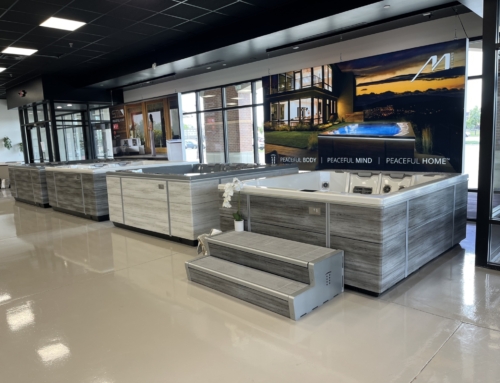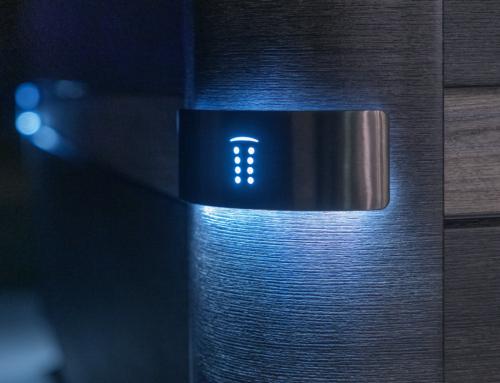Though media advertising is rapidly evolving, small spa businesses can still reap the benefits of traditional marketing, namely radio ads. As major advertising markets shift toward digital platforms, the cost for ad time on the radio has plummeted, making it an affordable option for smaller operations. And yet, despite the surge toward online marketing, millions of consumers still tune in to the radio on a daily basis. To leave this resource untapped is a missed opportunity.
However, before you rush to secure air time, take the time to understand what makes radio advertising effective. You must know your market, develop your message, and design an ad that speaks to your target consumer. Last year, H2Insider published “A Spa Retailer’s Guide to Understanding Media Buying” that outlined tips for buying airtime. Here, we discuss the considerations and strategies for establishing a successful radio campaign, one which reaches your target audience and brings customers into your showroom.
Radio Still Matters
There’s no doubt that the media climate is changing. However, despite the surge toward online marketing, conventional media remains the primary free source of information for millions of consumers. For small businesses, radio provides the means to access a diverse local market increase customer traffic.
Affordability
Affordability is one of the most alluring aspects of radio advertising for small businesses. Compared to television and other visual medias, radio is much cheaper to produce and air. According the U.S. Small Business Administration, radio advertising costs much less than cable advertising, yet reaches audiences similar in size. Additionally, because of the low production costs, you can afford to run your ad more frequently during better time slots.
Accessibility
Unlike cable or online advertising, you have access to a much more specialized, local audience with radio. In fact, most stations track listener data meticulously and tailor their content accordingly. These metrics would take an entire marketing team to analyze; in radio advertising, they’re part of the package.
Having a strategy months in advance allows you to negotiate more competitive rates and time slots, increasing the value and effectiveness of your ad.
For instance, stations schedule their programming to align with different audiences throughout the day. They’ve conducted enough research to understand that the listeners during the morning and evening commutes are not the same as those tuning in late at night. With this kind of information, your business can coordinate with the station to target your ad to the right audience.
Quick Turnaround
In advertising, timing is everything. Fortunately, radio is not only inexpensive to produce, but fast. While you can spend a great deal of time perfecting production , you can also feasibly produce an ad and run it within days. The quick turnaround allows you to incorporate topical, time-sensitive content into your message. Radio allows you to tap into current events and cultural trends to brand your message while they’re still fresh.
The Basics of Radio Advertising
In order to run an effective radio ad campaign, you must first understand how radio advertising works. You don’t simply record an ad, send it to the station, and–voila!–instant marketing success. In reality, you must produce professional content, choose specific time slots and frequency, and target the audience that is most likely to purchase or use spas. While a lot is involved in the process, a little bit of market research and campaign preparation can make it manageable.
Research the Airwaves
The first step to choosing the right station for your ad is knowing what’s out there. Familiarize yourself with the various local and national broadcasters in your region to get a feel of the kind of content and advertising they air. If you’re marketing the therapeutic benefits of swim spas to seniors, you won’t want to air your ad on an alternative rock station catered to young audiences.
To gain further insight into radio audiences, consult with the station programmers. They know their listeners better than anyone else and have conducted extensive research to target their programming. More likely than not, they know who listens when. This information can help you target specific time slots, as well as tailor your ad to certain listeners.
Repetition Is Essential
Though you may have produced a creative, engaging radio ad, it’s not going to be effective if it’s aired only a handful of times. In radio advertising, repetition is critical to reaching an audience. According to the SBA, it takes at least three exposures for a listener to absorb your message. They recommend that you purchase airtime in the same time slots over multiple days for the duration of the campaign, ensuring maximum exposure to similar audiences.
In radio advertising, repetition is critical to reaching an audience.
There is the possibility of oversaturating the airwaves. If your ad repeats too frequently, it can become an annoyance. You want your message to stick with listeners without bombardment.
Hone Your Message
More important than where and when you advertise, the message you send matters most. Before production begins, you should establish a clear marketing goal for the ad. Are you promoting a new product or sales event? Are you a new business looking to acquire foot traffic? These questions can help refine your marketing efforts, making them more effective and targeted.
Know Your Audience
One of the first questions you should ask yourself in radio advertising is “Who is this message for?” To create an effective marketing campaign, you need to establish your target audience. In Wet Leisure, they discuss the importance of a direct, focused message. They write, “The radio advert that works best will be simple and memorable and appropriate for your business and your audience.” To accomplish this, you must first identify your target audience–who are they, what do they need, what can they afford?
Creating Effective Ad Copy
Once you’ve established the message and audience of your campaign, you can now focus on the creative elements. Writing effective ad copy isn’t easy and requires a certain amount of talent. Whether you choose to write the copy yourself or hire a professional, you want to ensure that your ad spot speaks to consumers.
Spend some time listening to radio advertising and note which ones stick with you. Are they funny? Informative? Sentimental? Most importantly, how do you react do these ads? Are you likely to remember or respond to them? In asking these critical questions you can begin to refine the voice you wish to convey. Finally, when it comes time to write the script, you can emulate these voices and create a unique message for your brand.
In writing or reviewing your script, make sure to include:
- Your business name at least two to three times
- A single point of contact, such as a phone number or website
- A direct call to action
Be Direct
When you have less than a minute to convince customers to buy hot tubs from you, there’s no room for ambiguity. In order to use your time effectively, you should state important information and provide a direct call to action instructing your listeners to call or visit your location. Though you want your ad to be memorable, ultimately your goal is to bring more customers into your showroom. Additionally, you should provide only one way to contact you, either by phone, email, or in person. Too much information in a short period can be overwhelming and often tuned out.
When to Air Your Ad
Knowing when to run your ad campaign is nearly as important as what you’re selling. There are a number of factors to consider when planning an ad schedule, including cost, visibility, and demand. You also want to consider your current sales climate and any potential incentives to coincide with your radio ad.
Factoring Affordability
As you would expect, advertising costs fluctuate throughout the year. During the holiday season, airtime values soar; conversely, during slower consumer periods, prices drop. If your marketing means are limited, you want to find the perfect balance between premium and affordable airtime.
Factors to consider when planning an ad schedule include cost, visibility, demand, current sales climate, and potential incentives.
Generally, the first and third economic quarters have lowest advertising demands. These periods include the post-holiday lull and the summer months. However, you may discover that the middle of February is the perfect time to market warm, soothing hot tubs. And with some planning, you can coordinate a sales incentive to move spas even during the slowest months.
The Importance of Seasonal Strategy
In Pool and Spa News, Dana Robertson discusses the value of planning ahead when it comes to coordinating seasonal sales incentives. For instance, if you plan to have a holiday sale, it’s best not to wait until December to begin organizing your marketing campaign. Having a strategy months in advance allows you to negotiate more competitive rates and time slots, increasing the value and effectiveness of your ad.
In terms of value, there are few marketing mediums which provide the same amount of exposure at so little cost than radio. That being said, you nevertheless need an effective message that reaches and resonates with your target audience. When done correctly, a radio ad can make a measurable contribution to sales growth. Look for Part Two of this series in next Thursday’s post to learn the specifics on effective radio ad messaging.









I like how you mentioned talking with station programmers to see where the target audience is. Since I just started my own cookie delivery business, I want to get the word out in the city with a radio advertisement. I’ll be sure to do some research and see which station would be best to advertise.
Call the radio station sales manager and they will give you a dedicated radio sales rep. They know all the info on the station and it’s their job to make sure you run a radio schedule that works. Often they have copy writing skills too.